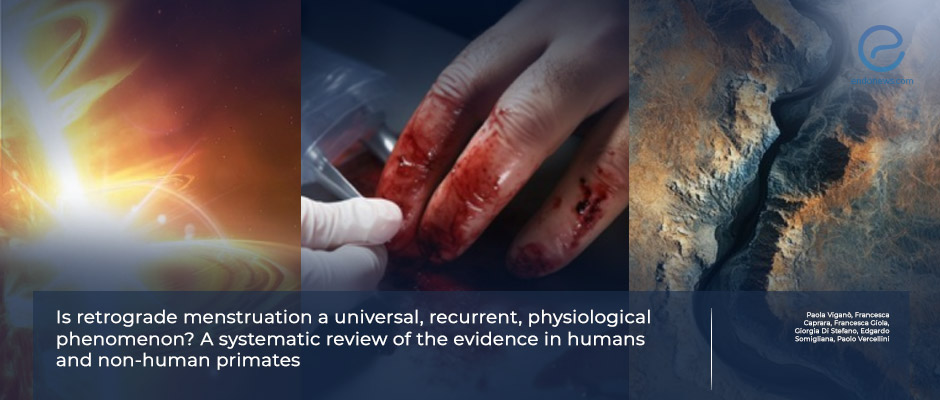Retrograde Menstruation: Insights from Humans and Non-Human Primates
Nov 6, 2024
Retrograde menstruation is a universal and consistent phenomenon during the reproductive period
Key Points
Importance:
- Retrograde menstruation occurs in 90% of menstruators during the reproductive period but its frequency, total amount, and cellular composition remain uncertain.
Highlights:
- Retrograde menstruation is a common phenomenon in both women with and without endometriosis.
- Due to methodological limitations in the limited data, the original Sampson model cannot be conclusively supported or refuted as the primary cause of endometriosis.
What's done here?:
- Dr.Vigano and Dr.Vercellini group from Italy, aimed to systematically evaluate retrograde menstruation's quantitative, qualitative, and temporal patterns.
- Human studies and non-human primate studies were assessed for eligibility.
- Those who met the criteria were included in the review after excluding case reports, conference abstracts, letters, papers, unclear results.
- The results were reported according to PRISMA guidelines.
Key results:
- Fifteen human studies were included, mostly with small sample sizes.
- Macroscopic blood in peritoneal fluid during menses was reported in 9% to 100%.
- Endometrial cells in peritoneal fluid were found in 8% to 75% of cases.
- Controversial findings were noted in patients with endometriosis.
- Retrograde menstruation has been studied cross-sectionally, but no data on its progression through the cycle is available.
- Two non-human primate studies were reviewed; retrograde menstruation was more common in baboons with naturally occuring endometriosis (83%) than in those without (51%).
- All studies evaluated the retrograde menstruation as one-time cross-sectionally. Information on the entire cycle or other cycles are not available.
Lay Summary
Vigano et al.from the Academic Center for Research on Adenomyosis and Endometriosis of Milan University, Italy, conducted a comprehensive literature review over a span of 23 years to evaluate retrograde menstruation in both humans and non-human primates, focusing on its role in endometriosis.
After screening relevant studies, 15 human and two non-human primate studies were included in the review. The studies examined peritoneal fluid as evidence of retrograde menstruation, with human studies revealing varying rates of endometrial cells in the peritoneal fluid, ranging from 8% to 75%. The authors explored the frequency, amount, and composition of retrograde menstruation in both species, discussing its potential link to endometriosis development.
The authors proposed that variability in the quantity, quality, and timing of retrograde menstruation might influence the risk of endometriosis by affecting the adhesion, survival, and proliferation of endometrial cells at ectopic sites. In this context, factors like hemoperitoneum and iron's pro-inflammatory and pro-oxidant roles in promoting tissue adhesion and infiltration were discussed.
Two main pathogenic models were presented. The first, a multifactorial, multistage model, suggests that endometriosis occurs in women with particularly aggressive endometrial cells capable of infiltrating ectopic sites, regardless of the amount of retrograde menstruation. The second model proposes that erythrocytes, through their effect on mesothelial breakdown, act as a precursor to adhesion and infiltration of normal endometrial cells. This review, published in Human Reproduction Open, provides a detailed examination of retrograde menstruation and its potential role in the pathogenesis of endometriosis.
Research Source: https://pubmed.ncbi.nlm.nih.gov/39055487/
iron blood menstruation uterus endometrium ovulation endometriosis.

